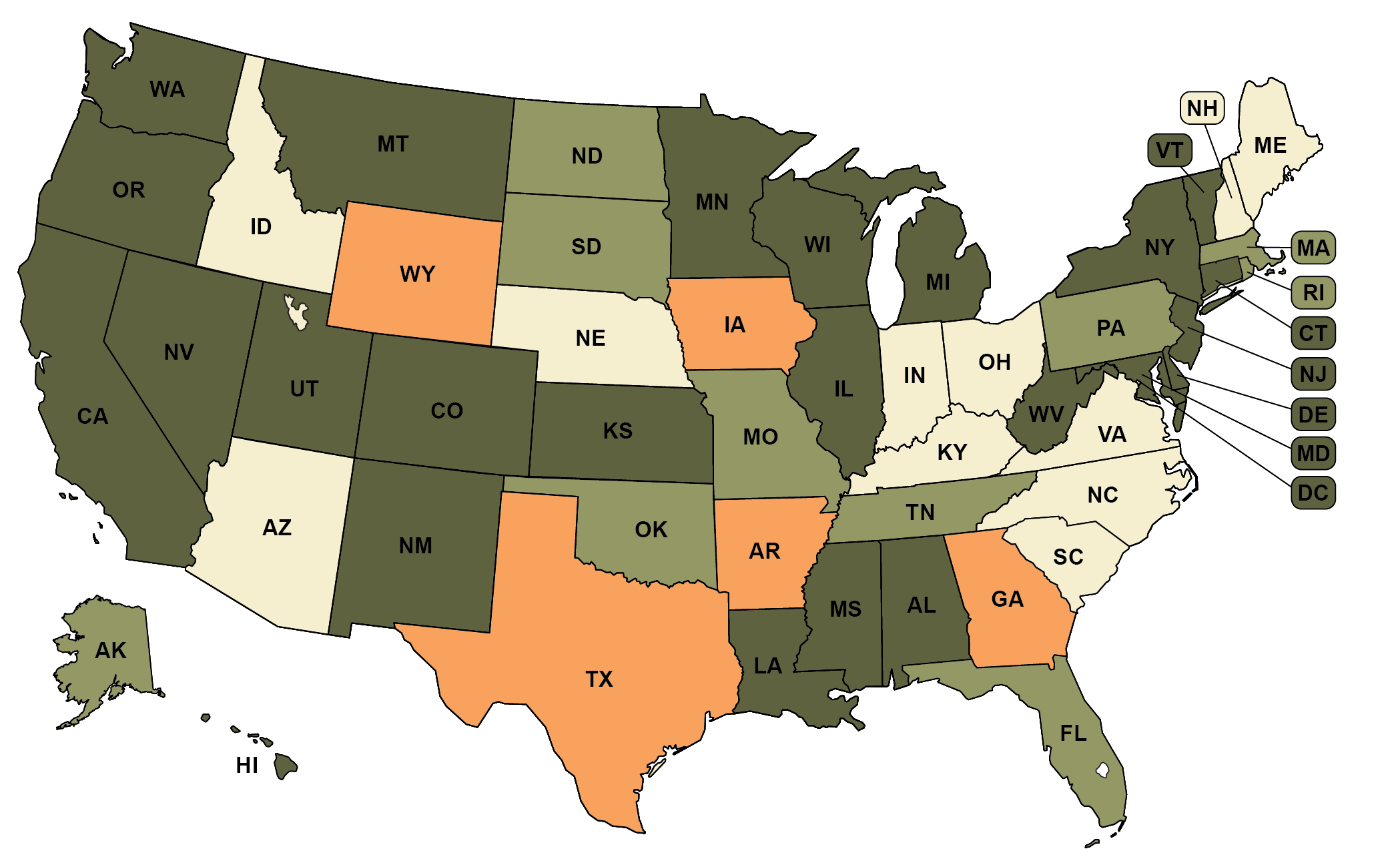In addition to policies governing which voters qualify for absentee ballots, some states have implemented options for voters to sign up to be placed on a list to permanently receive absentee ballots each election. States differ on whether all voters or only certain voters are eligible for this option, and other states allow annual or bi-annual sign ups. In addition, certain states will send applications rather than actual ballots. A small number of states have also implemented bans on the unsolicited distribution of absentee ballots or applications. States that conduct all-mail elections have been scored as having a permanent absentee list.

-
State allows all voters to sign up for a permanent absentee list to receive ballots
(17 states + D.C.)
-
State allows some voters to sign up for a permanent absentee list to receive ballots
(9 states)
-
State allows some or all voters to sign up for annual or bi-annual absentee list to receive ballots
(4 states)
-
State allows some or all voters to sign up for permanent list to receive applications
(6 states)
-
State has no applicable law
(9 states)
-
State bans unsolicited distribution of absentee ballots or applications
(5 states)
Recommended citation: Movement Advancement Project. "Permanent Absentee Voter List Availability" https://www.mapresearch.org/democracy-maps/permanent_absentee_lists. Accessed [day of access]
Breakdown by Population
*Note: These percentages reflect the voting-eligible population, as reported by the United States Election Project.
38 % of voting-eligible population lives in states that allow some or all voters to sign up for a permanent absentee list to receive ballots
14 % of the population lives in states that allow some voters to sign up for a permanent absentee list to receive ballots
9 % of voting-eligible population lives in states that allow some or all voters to sign up for annual or bi-annual absentee list to receive ballots
11 % of the population lives in states that allow some or all voters to sign up for permanent list to receive applications
14 % of voting-eligible population lives in states that have no applicable law
14 % of voting-eligible population lives in states that ban unsolicited distribution of absentee ballots or applications


